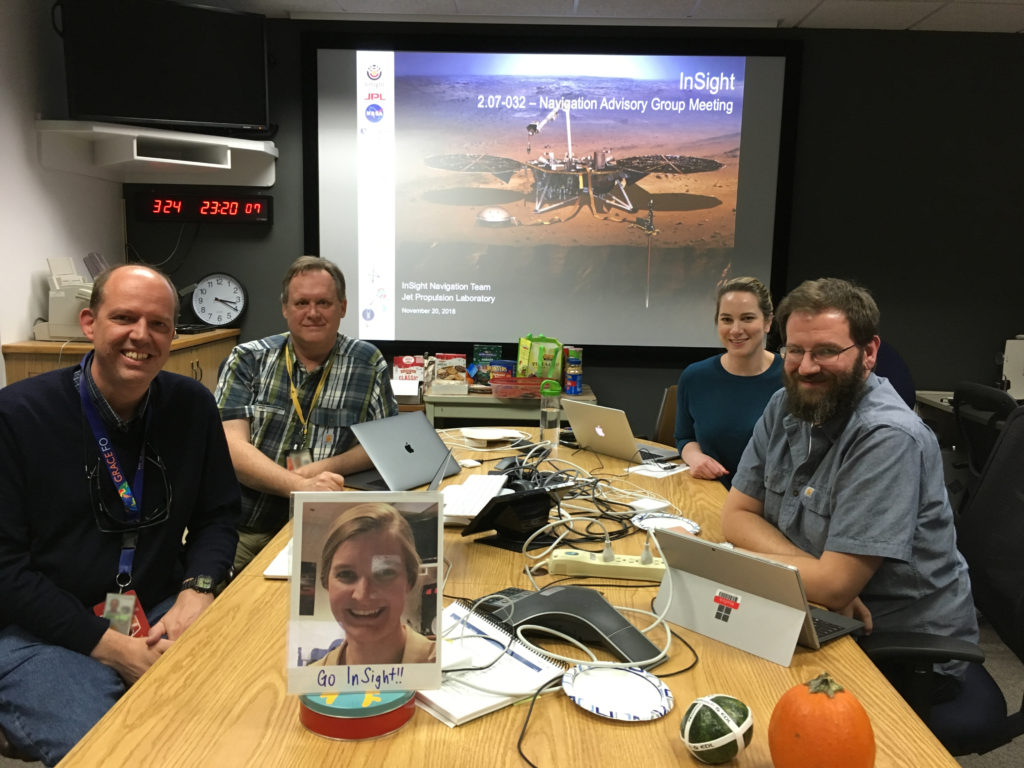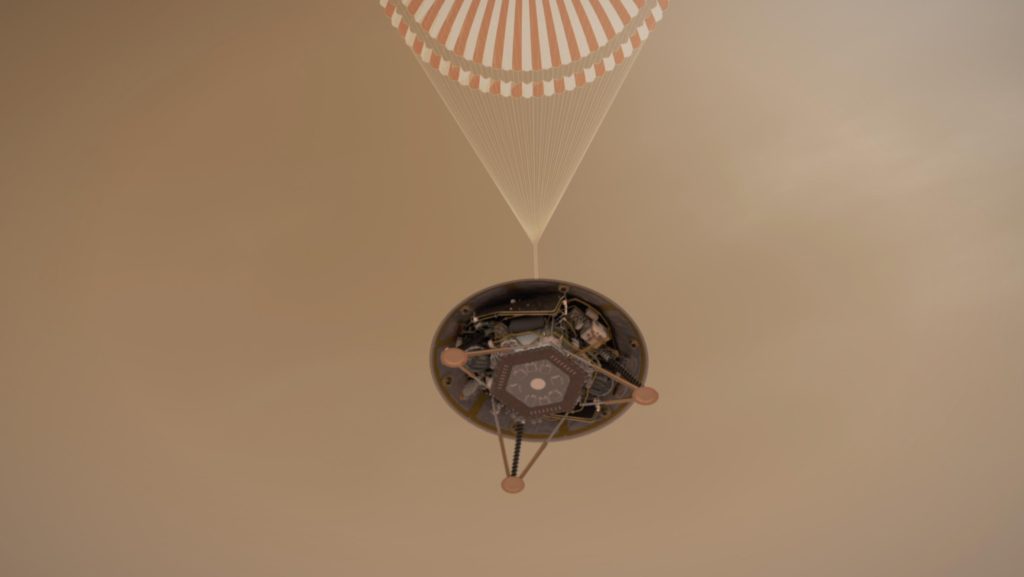
Join Texas Exes Gerhard Kruizinga, Sarah Elizabeth McCandless, Mark Wallace, and Allen Halsell (if we missed someone, let us know!) as the world watches live landing coverage of NASA’s Interior Exploration using Seismic Investigations, Geodesy and Heat Transport (InSight) two-year mission to to study Mars’ deep interior.
And, as if that wasn’t impressive enough, meet Mars Cube One — the first CubeSat to Deep Space. The rocket that launched InSight also launched a separate NASA technology experiment: two mini-spacecraft called Mars Cube One, or MarCO. These briefcase-sized CubeSats fly on their own path to Mars behind InSight. Their goal is to test new miniaturized deep space communication equipment. Although InSight’s success is independent of its CubeSat tag-alongs, if the MarCOs make it to Mars, they may relay back InSight data as it enters the Martian atmosphere and lands. This is the first test of miniaturized CubeSat technology at another planet, which researchers hope can offer new capabilities to future missions.

InSight — Studying the ‘Inner Space’ of Mars
InSight is a Mars lander designed to give the Red Planet its first thorough checkup since it formed 4.5 billion years ago. It is the first outer space robotic explorer to study in-depth the “inner space” of Mars: its crust, mantle, and core.
Studying Mars’ interior structure answers key questions about the early formation of rocky planets in our inner solar system – Mercury, Venus, Earth, and Mars – more than 4 billion years ago, as well as rocky exoplanets. InSight also measures tectonic activity and meteorite impacts on Mars today.
The lander uses cutting edge instruments, to delve deep beneath the surface and seek the fingerprints of the processes that formed the terrestrial planets. It does so by measuring the planet’s “vital signs”: its “pulse” (seismology), “temperature” (heat flow), and “reflexes” (precision tracking).
This mission is part of NASA’s Discovery Program for highly focused science missions that ask critical questions in solar system science.
For more information about InSight, see: https://mars.nasa.gov/insight/
To watch online, see: https://mars.nasa.gov/insight/timeline/landing/watch-online/
